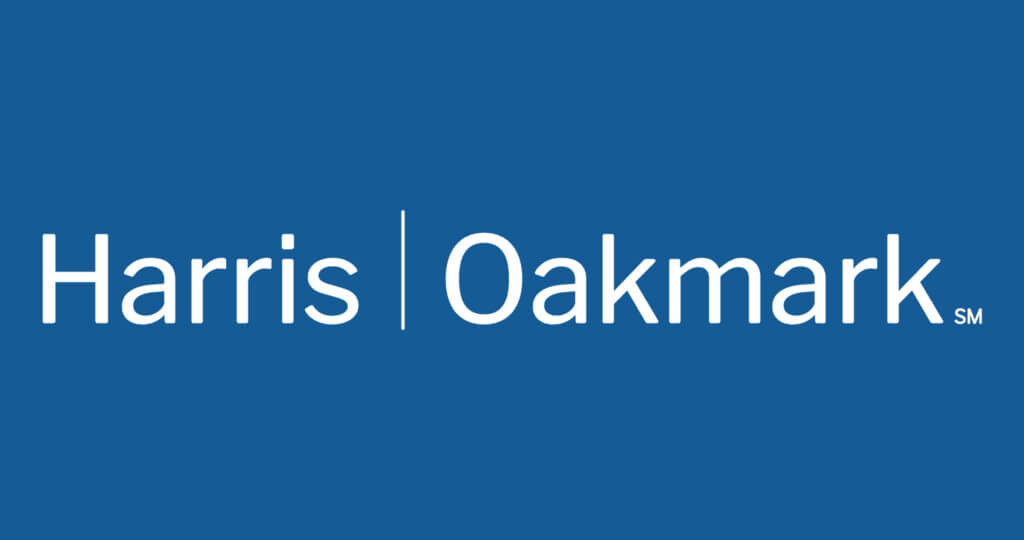Fellow Shareholders,
Unfortunately, the third quarter of 2022 was very unkind to us. Global equity prices were hit quite hard as a result of the convergence of three macro events: the continued war in Ukraine, inflation-induced rising interest rates and economic uncertainty in China caused by continued Covid-19-related lockdowns. In addition, European equities have been impacted by weak local market price performance, and the total return has been negatively impacted by the strong U.S. dollar, causing a negative currency impact. As a result, both of our international strategies performed poorly both on an absolute basis and relative to peers. Please see individual Fund letters for details.
Inflation: How Did We Get Here?
To understand our current situation, you must go back to the Global Financial Crisis when central banks began aggressively loosening monetary policy via bond buying and lowering rates. Simultaneously, regulatory measures were taken to force the banks to grow their reserves and their capital base, literally causing reserves to nearly triple in the 10 years after the financial crisis. Instead of increasing lending and shareholder returns, reserves were parked at central banks earning little, no or even negative returns. This condition allowed monetary expansion without inflation. However, today, for the most part, banks are now fully reserved, and earnings can be used to grow their businesses or return capital to shareholders as we are seeing today with most of our European bank holdings. Today’s inflation originates from an overly accommodative monetary policy that failed to pull back as banks reached desired capital positions and economies recovered from the shock of Covid-19. Other contributing factors play a role as well, from supply chain disruptions and expansionary fiscal policies (blamed on Covid-19) to the energy price spikes brought on by the war in Ukraine and measures that have restricted energy supply.
Where Are We Today? And the Case for European Equities
The majority of central banks are aggressively tightening financial conditions to rein in inflation, with some increasing interest rates at a rapid speed. However, it is important to keep these conditions in a broader perspective outside of the past roughly 13 years. The U.S. 10-year yield, along with most major government debt securities, has been in a gradual decline since its peak in 1984 at 13.8%, reaching as low as 50 basis points during the early stages of Covid-19 and currently sits just below 4%. While the recent interest rate increases are extraordinary relative to the past 10 years, they are not when measured against the past 40 years.
The euro traveled from 150 to 96 against the U.S. dollar over the past 14 years. This has negatively impacted the U.S. dollar prices of European equities. And despite the macro headwinds caused by inflation, the war and rising energy costs, most of the European companies in which we are invested are diversified as they have broad exposure to the global economy and, even with these macro challenges, are reporting satisfactory business performance and returns. In many cases, European-based businesses are HELPED by the strong dollar. For example, BMW and Mercedes-Benz, two holdings of the Oakmark International Fund, earn their highest percentage of revenues and profits in regions outside of Europe, specifically in China and the U.S. As these markets perform and as the euro weakness persists, there is actually upward pressure on profits, all else being equal. In addition, both of these companies offer attractive valuations and boast healthy balance sheets with large net cash positions, yet they trade between four and five times their earnings and have dividend yields greater than 7%.
There are numerous other examples of European-based companies (luxury goods, global industrials, consumer product companies (CPCs), etc.) that are global operators selling at extremely depressed valuations because of the postal code of their corporate headquarters. This occurs because investors and traders often fail to separate the macro from the micro, providing an exploitable opportunity for long-term investors, such as ourselves, who measure value generally based on corporate performance and specifically through cash flow generation through time, not on macro events.
Conclusion
As described in a previous letter, we can track our portfolios’ market value versus our estimate of intrinsic value. Over the 30 years of the International Fund’s history, the common range has been between 50% to 75%, which is similar to the International Small Cap Fund. There were two big exceptions: March 2009 at the bottom of the Global Financial Crisis and March 2020 during the Covid-19 pandemic low, when both portfolios’ market value dropped below 40%. As of September 30, both portfolios are hovering right around 40% of our estimate of intrinsic value. History tells us that when the Funds reach a price to value ratio under 55%, there is strong outperformance to come. See the charts below.
This is consistent with our core belief: Equities become LESS risky as they become more attractively priced. And when asset prices rise materially faster than value, they become even MORE risky. As such, despite and because of the pain of falling equity prices that we have experienced, we believe the opportunity for gain is higher and the exposure to risk is lower.
We remain committed to delivering acceptable returns and are extremely grateful for the continued patience and confidence you have shown.
Potentially Opportune Time for Oakmark International
$0.46 price to value as of September 30, 2022
| Oakmark International Portfolio Price to Value | 3-Year Average Subsequent Total Return* | 3-Year Average Subsequent Excess Return** | of Periods*** |
|---|---|---|---|
| Below $0.55 | 13.6% | 6.0% | 14 |
| $0.55 – $0.63 | 6.0% | 1.7% | 18 |
| $0.64 – $0.71 | 5.1% | 0.4% | 17 |
| Higher than $0.71 | -2.0% | -2.4% | 13 |
Potentially Opportune Time for Oakmark International Small Cap
$0.46 price to value as of September 30, 2022
| Oakmark International Small Cap Portfolio Price to Value | 3-Year Average Subsequent Total Return* | 3-Year Average Subsequent Excess Return** | of Periods*** |
|---|---|---|---|
| Below $0.55 | 11.2% | 1.4% | 19 |
| $0.55 – $0.63 | 5.0% | -1.0% | 10 |
| $0.64 – $0.71 | 4.1% | -0.9% | 15 |
| Higher than $0.71 | 0.9% | -1.5% | 18 |
Source: Harris Associates.
*Column represents returns three years following this price to value level and is an average of all periods.
** Excess return indicates Oakmark International Fund 3-year return minus MSCI World ex US Index (net) 3-year return and Oakmark International Small Cap Fund 3-year return minus MSCI World ex US Small Cap Index (net) 3-year return, respectively.
*** The number of periods is defined as occurrences at quarter-end when the portfolio’s price to value was in each respective range.
The Price to Value for a stock is the ratio of the current stock price divided by the intrinsic value as calculated by the investment team’s valuation model. The Price to Value for a portfolio is the weighted average of the price to value for each stock in the portfolio.
The securities mentioned above comprise the following preliminary percentages of the Oakmark International Fund’s total net assets as of 09/30/2022: BMW 2.6% and Mercedes-Benz Group 2.9%. Portfolio holdings are subject to change without notice and are not intended as recommendations of individual stocks.
The securities mentioned above comprise the following preliminary percentages of the Oakmark International Small Cap Fund’s total net assets as of 09/30/2022: BMW 0% and Mercedes-Benz Group 0%. Portfolio holdings are subject to change without notice and are not intended as recommendations of individual stocks.
The MSCI World ex U.S. Index (Net) is a free float-adjusted, market capitalization-weighted index that is designed to measure international developed market equity performance, excluding the U.S. The index covers approximately 85% of the free float-adjusted market capitalization in each country. This benchmark calculates reinvested dividends net of withholding taxes. This index is unmanaged and investors cannot invest directly in this index.
The MSCI World ex USA Small Cap Index (Net) is designed to measure performance of small-cap stocks across 22 of 23 Developed Markets (excluding the United States). The index covers approximately 14% of the free float-adjusted market capitalization in each country. This benchmark calculates reinvested dividends net of withholding taxes. This index is unmanaged and investors cannot invest directly in this index.
On occasion, Harris may determine, based on its analysis of a particular multi-national issuer, that a country classification different from MSCI best reflects the issuer’s country of investment risk. In these instances, reports with country weights and performance attribution will differ from reports using MSCI classifications. Harris uses its own country classifications in its reporting processes, and these classifications are reflected in the included materials.
The funds’ portfolios tend to be invested in a relatively small number of stocks. As a result, the appreciation or depreciation of any one security held by the Fund will have a greater impact on the Funds’ net asset value than it would if the Fund invested in a larger number of securities. Although that strategy has the potential to generate attractive returns over time, it also increases the Funds’ volatility.
The stocks of smaller companies often involve more risk than the stocks of larger companies. Stocks of small companies tend to be more volatile and have a smaller public market than stocks of larger companies. Small companies may have a shorter history of operations than larger companies, may not have as great an ability to raise additional capital and may have a less diversified product line, making them more susceptible to market pressure.
Investing in foreign securities presents risks that in some ways may be greater than U.S. investments. Those risks include: currency fluctuation; different regulation, accounting standards, trading practices and levels of available information; generally higher transaction costs; and political risks.
The information, data, analyses, and opinions presented herein (including current investment themes, the portfolio managers’ research and investment process, and portfolio characteristics) are for informational purposes only and represent the investments and views of the portfolio managers and Harris Associates L.P. as of the date written and are subject to change and may change based on market and other conditions and without notice. This content is not a recommendation of or an offer to buy or sell a security and is not warranted to be correct, complete or accurate.
Certain comments herein are based on current expectations and are considered “forward-looking statements”. These forward looking statements reflect assumptions and analyses made by the portfolio managers and Harris Associates L.P. based on their experience and perception of historical trends, current conditions, expected future developments, and other factors they believe are relevant. Actual future results are subject to a number of investment and other risks and may prove to be different from expectations. Readers are cautioned not to place undue reliance on the forward-looking statements.
All information provided is as of 09/30/2022 unless otherwise specified.








